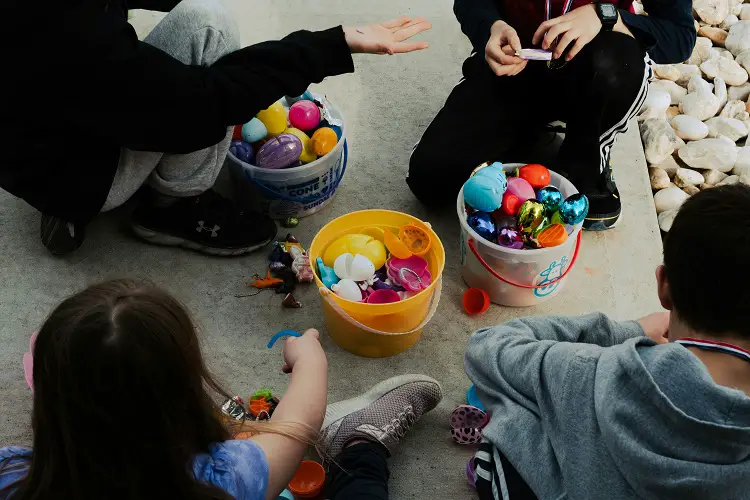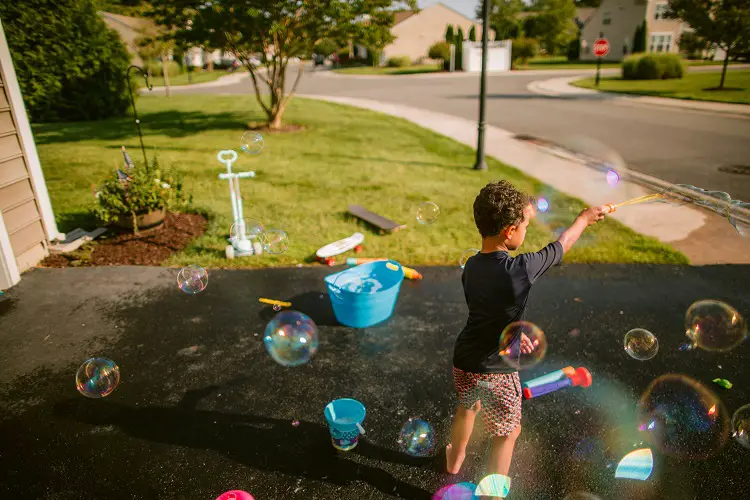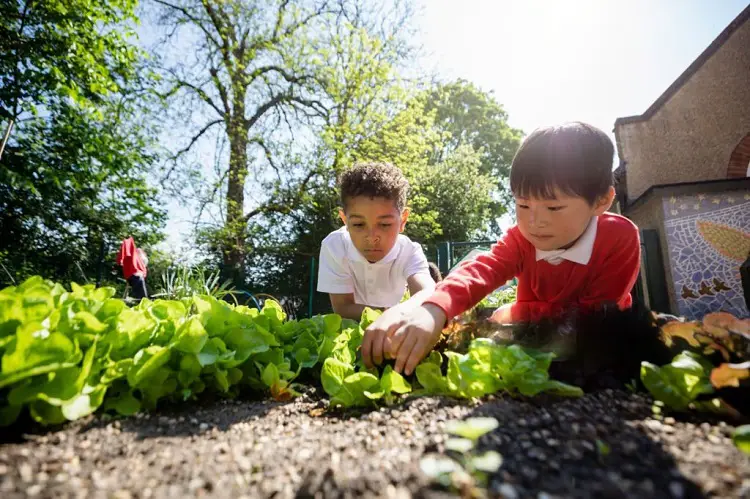As winter melts away and the sunshine returns, spring is the perfect time to refresh your routines and get outside with your little ones.
For parents of neurodivergent children, however, this seasonal shift can come with both excitement and uncertainty. That’s why this guide focuses entirely on spring activities for kids with autism—thoughtfully selected to be both engaging and sensory-sensitive.
From outdoor adventures to calm indoor options, these activities are perfect for children who benefit from structured, low-stimulation experiences. Whether you’re planning a weekend outing, a homeschool enrichment day, or after-school playtime, this list will help you make springtime meaningful and manageable.
With over 10 years of experience supporting special needs families, I understand the balance it takes to encourage exploration without overwhelming.
Let’s walk through how you can make the most of this vibrant season with sensory-friendly, autism-aware activities.
Why Spring is a Wonderful Opportunity for Kids with Autism
Spring offers a natural sensory playground—but for children with autism spectrum disorder (ASD), not all sensory input is created equal. Loud noises, unpredictable crowds, or scratchy seasonal clothing can be overwhelming. However, intentional spring activities for autistic children can support developmental skills like communication, emotional regulation, and gross motor movement.
Some benefits of spring-themed autism activities include:
- Sensory integration (tactile, auditory, visual)
- Improved focus and motor skills
- Reduced anxiety through nature exposure
- Opportunities for social connection in low-pressure environments
The key is to follow your child’s cues, offer structure and choice, and prioritize activities that align with their sensory preferences.
20 Spring Activities for Kids with Autism

Here’s a thoughtfully curated list of 20 sensory-friendly spring activities that are fun, calming, and developmentally enriching for autistic children:
1. Sensory Garden Walks
Take your child on a walk through a botanical garden, a quiet park, or even your backyard. Engage their senses by encouraging them to touch soft leaves, smell flowers, or listen to birds chirping.
Tip: Create a simple visual checklist of things to look for, like a butterfly, flower, or bird, to give the walk more purpose.
2. Create a Spring Sensory Bin
Fill a bin with dried beans, fake grass, mini flowers, small animal toys, and other spring-themed items. Include scoops and spoons for added motor skill practice.
3. Outdoor Bubble Time

Outdoor bubble time is great for calming overstimulated children through repetitive motion. Bubbles are visually engaging and promote hand-eye coordination. Use bubble wands, machines, or even scented bubble solutions for extra sensory fun.
4. Scavenger Hunts with Visual Aids
Prepare a printable scavenger hunt with images of spring objects like clouds, worms, tulips, and bees. Kids can check off what they find. This helps promote focus and visual scanning for your kid.
5. Visit the Gaylord Texan Resort and Convention Center
If you’re based in Texas or visiting, this resort offers beautiful indoor gardens, water features, and seasonal events that can be explored at your child’s pace. Always look for autism-friendly events or plan visits during quiet hours.
6. Planting Flowers or Herbs
Gardening offers tactile, visual, and olfactory stimulation. Choose soft plants like lamb’s ear or fragrant ones like lavender. Allow your child to dig, water, and touch. This encourages responsibility, patience, and fine motor development in your kid.
7. Create a Wind Chime from Recyclables
Use string, beads, spoons, and metal lids to make a simple wind chime. The soft sounds and crafting process are perfect for older autistic kids. This unique activity combines auditory input with creative expression.
8. Water Play with Measuring Tools
This is perfect for warm spring days and helps regulate the nervous system. Fill tubs or buckets with water and let your child pour, scoop, and stir using measuring cups. Add natural elements like leaves or flower petals for added interest.
9. Spring Craft Corner
Use tissue paper, pom-poms, and pipe cleaners to make flowers, bees, or rainbows. These activities are perfect for autism-friendly spring crafts and building hand strength.
10. Visit a Quiet Petting Zoo
A gentle, well-structured interaction with animals builds empathy and confidence. Animals can be soothing and exciting for many children with autism. Look for petting zoos that offer sensory-friendly hours or private bookings.
11. Four Seasons Resort and Club Dallas at Las Colinas
Another Texas-based gem that offers a peaceful environment, scenic walking trails, and pools. Great for families looking for a relaxing, autism-aware getaway.
12. Rain Stick DIY Project
Make a calming rain stick using a cardboard tube, rice, and foil. It’s great for sound-sensitive kids who enjoy soft, rhythmic noises. This teaches cause-and-effect and self-soothing.
13. Picnic in a Quiet Park
Pack familiar snacks and enjoy the outdoors under a shaded tree or gazebo. Bring along books or sensory toys for wind-down time. Remember, avoid busy areas and keep transitions slow.
14. Chalk Art on the Sidewalk
Another activity that can boost creativity and spatial awareness. Let your child create a spring mural with chalk. Use stencils if needed, or try drawing in a taped-off “safe zone” to define space.
15. Visit Big Bend National Park (Sensory-Friendly Travel)
Big Bend offers stunning views, calm hiking paths, and open landscapes. It’s an ideal destination for families seeking autism-friendly outdoor activities without city noise or crowds. If you’re looking for the best kid-friendly weekend getaway destination, this place is the place to be with you’re kids.
16. Make Butterfly Feeders
This builds anticipation and observational skills. Use recycled jars or cups to create butterfly feeders. Hang them in your garden and watch butterflies flutter by.
17. Yoga and Stretching in the Grass
This activity is great for emotional regulation and body awareness. Spring weather is perfect for outdoor yoga. Use a visual guide to demonstrate poses like butterfly, cat, and tree.
18. Cloud Spotting and Storytelling
One of the calmest and imaginative ways to practice language skills. Lie on a blanket and observe the clouds. Ask your child what shapes they see and create a story together based on those images.
19. Spring-Themed Story Time Tent
Set up a tent or reading nook outside with seasonal books. Include visuals and props for tactile learners.
20. Sensory Obstacle Course
Use hula hoops, pool noodles, cones, and soft mats to create a gentle obstacle course in your backyard. Add nature-themed challenges like hopping like a frog or flying like a bird. This can improve gross motor coordination and provide sensory input.
Read Also: Top 5 Fun and Safe Summer Activities For Toddlers
Tips for a Smooth Spring Season with Your Autistic Child
- Keep transitions smooth by using countdowns or timers
- Provide clear visuals for all activities
- Stick to routines even during outdoor play
- Watch for signs of overstimulation (covering ears, shutting down, pacing)
- Celebrate small wins and avoid overwhelming days with too many plans
Remember, spring activities for kids with autism should be joyful, not stressful. Choose the experiences that best suit your child’s needs, sensory profile, and energy level.
Conclusion: Making the Most of Spring with Autism in Mind
Spring is not just about blooming flowers—it’s about blooming potential. With thoughtful planning, patience, and creativity, you can introduce your child to a world of experiences that stimulate their senses, support their development, and strengthen your bond.
From outdoor adventures like bubble play and nature hikes to calming indoor crafts and storytelling, these spring activities for kids with autism are crafted to bring joy, structure, and growth to your season. Whether your child is sensory-seeking or sensory-sensitive, there’s something here to nurture their unique needs.
Embrace the season. Embrace your child. And let every moment bloom with purpose.
